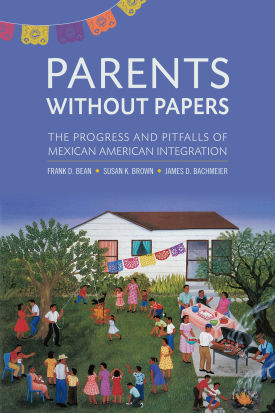The rich make money in many ways, including receiving a sizeable portion of income from capital gains. While the extent and growth of income inequality has received much attention recently, much less attention has been paid to exploring the role played by capital gains in these phenomena. Previous research finds that the share of income received by the top 1 percent, 0.1 percent, and 0.01 percent has increased sharply since 1975 and that the composition of income at the very top has changed considerably.

Race, Class, and Affirmative Action
About This Book
“If you thought class-based affirmative action is the answer, think again. This provocative book, based on a rigorous study of current and historical trends in the United States and internationally, raises serious questions and challenges for both race- and class-based affirmative action policies. Bringing a timely and compelling perspective to the debate, Sigal Alon convincingly demonstrates what the most equitable admission solutions are for today.”
–Barbara Schneider, John A. Hannah University Distinguished Professor, Michigan State University
“Race, Class, and Affirmative Action is an important book, which adopts an unusual and valuable international perspective, focusing on Israel and the United States. It is remarkably balanced and free of the abundance of cant too often found in American discussions of affirmative action. Equally noteworthy is Sigal Alon’s emphasis on evidence-based findings and her frank recognition that there is no ‘silver bullet.’ Trade-offs are unavoidable—between achieving significant representation of racial minorities in the most elite universities and achieving a broader diversity at affordable cost. Neither class-based affirmative action (in any number of guises) nor a well-crafted race-sensitive policy is, in and of itself, a cure-all. Alon is to be commended for her practical, realis - tic, and hard-headed approach to a topic that needs precisely those qualities.”
–William G. Bowen, president emeritus, The Andrew W. Mellon Foundation
“In her new book, Race, Class, and Affirmative Action, Sigal Alon offers a powerful comparative analysis which opens new approaches to assess the structural determinants of disadvantage, yielding new strategies for productive policy development. Her insights open our thinking for forward movement in the United States, but also for other countries such as Brazil, India, and South Africa which are struggling with similar challenges.”
–Ann Marcus, professor and director, The Steinhardt Institute for Higher Education Policy, New York University
No issue in American higher education is more contentious than that of race-based affirmative action. In light of the ongoing debate around the topic and recent Supreme Court rulings, affirmative action policy may be facing further changes. As an alternative to race-based affirmative action, some analysts suggest affirmative action policies based on class. In Race, Class, and Affirmative Action, sociologist Sigal Alon studies the race-based affirmative action policies in the United States and the class-based affirmative action policies in Israel. Alon evaluates how these different policies foster campus diversity and socioeconomic mobility by comparing the Israeli policy with a simulated model of race-based affirmative action and the U.S. policy with a simulated model of class-based affirmative action.
Alon finds that affirmative action at elite institutions in both countries is a key vehicle of mobility for disenfranchised students, whether they are racial and ethnic minorities or socioeconomically disadvantaged. Affirmative action improves their academic success and graduation rates and leads to better labor market outcomes. The beneficiaries of affirmative action in both countries thrive at elite colleges and in selective fields of study. As Alon demonstrates, they would not be better off attending less selective colleges instead.
Alon finds that Israel’s class-based affirmative action programs have provided much-needed entry slots at the elite universities to students from the geographic periphery, from high-poverty high schools, and from poor families. However, this approach has not generated as much ethnic diversity as a race-based policy would. By contrast, affirmative action policies in the United States have fostered racial and ethnic diversity at a level that cannot be matched with class-based policies. Yet, class-based policies would do a better job at boosting the socioeconomic diversity at these bastions of privilege. The findings from both countries suggest that neither race-based nor class-based models by themselves can generate broad diversity. According to Alon, the best route for promoting both racial and socioeconomic diversity is to embed the consideration of race within class-based affirmative action. Such a hybrid model would maximize the mobility benefits for both socioeconomically disadvantaged and minority students.
Race, Class, and Affirmative Action moves past political talking points to offer an innovative, evidence-based perspective on the merits and feasibility of different designs of affirmative action.
SIGAL ALON is an associate professor in the Department of Sociology and Anthropology at Tel-Aviv University.
RSF Journal
View Book Series
Sign Up For Our Mailing List
Apply For Funding

Parents Without Papers
About This Book
Winner of the 2016 Otis Dudley Duncan Award for Outstanding Scholarship in Social Demography
Honorable Mention, 2016 Thomas and Znaniecki Award from the International Migration Section of the American Sociological Association
“Parents Without Papers exposes the effects of legal status on immigrants’ life chances, which persist over generations. Through carefully collected data, meticulous analysis, and theoretical acuity, the authors offer a sobering account of the injurious consequences of an undocumented status on long-term patterns of immigrant integration, making a unique and significant contribution to immigration scholarship. Their findings also have much to offer for policy, making a compelling case for the legalization of undocumented immigrants to ensure a better future for the immigrants themselves and for the country as a whole.”
—CECILIA MENJÍVAR, Cowden Distinguished Professor, Arizona State University
“Parents Without Papers is a major contribution to our understanding of immigrant incorporation and Mexican American mobility. Conceptually, theoretically, and empirically it shows the multifaceted impact that ‘illegal’ status has on Mexican American communities including immigrants and the native born second and third generations. The volume will become essential to scholars and policy makers seriously concerned about immigrant policy. “
—RODOLFO O. DE LA GARZA, Eaton Professor of Administrative Law and Municipal Science, Columbia University
For several decades, Mexican immigrants in the United States have outnumbered those from any other country. Though the economy increasingly needs their labor, many remain unauthorized. In Parents Without Papers, immigration scholars Frank D. Bean, Susan K. Brown, and James D. Bachmeier document the extent to which the outsider status of these newcomers inflicts multiple hardships on their children and grandchildren. Parents Without Papers provides both a general conceptualization of immigrant integration and an in-depth examination of the Mexican American case. The authors draw upon unique retrospective data to shed light on three generations of integration. They show in particular that the “membership exclusion” experienced by unauthorized Mexican immigrants—that is, their fear of deportation, lack of civil rights, and poor access to good jobs—hinders the education of their children, even those who are U.S.-born. Moreover, they find that children are hampered not by the unauthorized entry of parents itself but rather by the long-term inability of parents, especially mothers, to acquire green cards. When unauthorized parents attain legal status, the disadvantages of the second generation begin to disappear. These second-generation men and women achieve schooling on par with those whose parents come legally. By the third generation, socioeconomic levels for women equal or surpass those of native white women. But men reach parity only through greater labor-force participation and longer working hours, results consistent with the idea that their integration is delayed by working-class imperatives to support their families rather than attend college. An innovative analysis of the transmission of advantage and disadvantage among Mexican Americans, Parents Without Papers presents a powerful case for immigration policy reforms that provide not only realistic levels of legal less-skilled migration but also attainable pathways to legalization. Such measures, combined with affordable access to college, are more important than ever for the integration of vulnerable Mexican immigrants and their descendants.
FRANK D. BEAN is Distinguished Professor of Sociology and Director of the Center for Research on International Migration at the University of California, Irvine.
SUSAN K. BROWN is associate professor of sociology at the University of California, Irvine.
JAMES D. BACHMEIER is assistant professor of sociology at Temple University.
RSF Journal
View Book Series
Sign Up For Our Mailing List
Apply For Funding
This project uses an audit study approach to address whether charter schools limit access to disadvantaged applicants. We evaluate potential mechanisms by randomly varying child disability attributes. Specifically, we will send messages to a sample of randomly selected charter schools throughout the country from fictitious parental email accounts, inquiring about schools’ application process.
A hallmark of the American Dream is the potential for improving one’s lot in life regardless of background or social origin. For this reason, many social scientists have analyzed social and economic mobility. Until recently, this work has been constrained by the use of relatively small survey data sets, sometimes with significant attrition. Recent analyses of large administrative data sources from the Internal Revenue Service, in contrast, do not have respondent attrition problems and contain very large sample sizes that provide more precise estimates of mobility.
In viewing the U.S. as a land of equal opportunity, increased education—and especially college—is seen as the primary mechanism for achieving upward social and economic mobility. In contrast, researchers have recently raised the possibility that postsecondary education may be contributing to increased economic stratification. Professor John Friedman of Brown University and his colleagues will examine the role of college in the intergenerational transmission of income inequality.
Over the last decade, student loan debt, delinquencies and defaults have increased considerably. According to Federal Reserve data, total student loan debt climbed from $364 billion in 2004 to almost $1.2 trillion in 2014. During this decade, the percentage of borrowers in repayment and over 90 days delinquent rose from 20% to nearly a third.
Professors Jesse Shapiro and Justine Hastings will complete a project with two components that provide new tests of "mental accounting," or how households represent money in their financial decision-making. Psychological evidence suggests that households accommodate financial windfalls or additional expenses differently depending on which "mental accounts" they impact.
There are 47 million people in poverty in the United States. Although many public and private programs aim to address the needs of the poor, we have only limited information on the effectiveness of many of these programs. A key obstacle to designing evidence-based anti-poverty initiatives is that the groups that innovate (local service providers), evaluate (researchers), and replicate (policy actors) tend to act in isolation. This makes it difficult to identify successful programs and replicate them nationally.
The recent displacement of workers by computers has sparked interest in the future of work and occupations. Research on technological changes and increasing wage inequality are receiving growing attention. However, despite its relevance, there is little empirical evidence on the trajectories of workers displaced by a new technology.
Economists Miguel Morin and Rowena Gray will analyze the changing structure of American jobs between 1900 and 1940 in response to the spread of electrification.
Pagination
- Previous page
- Page 51
- Next page
